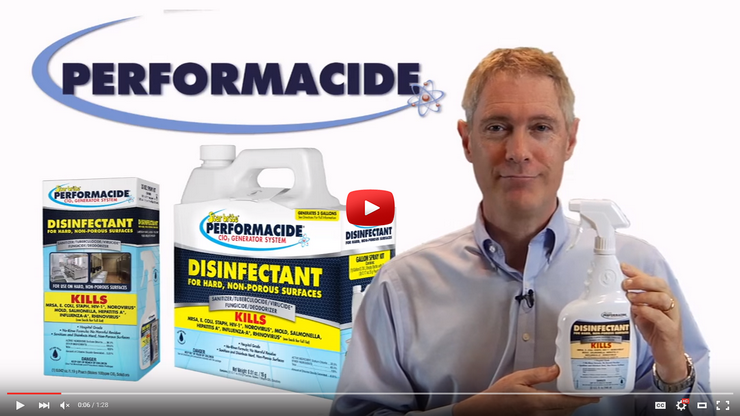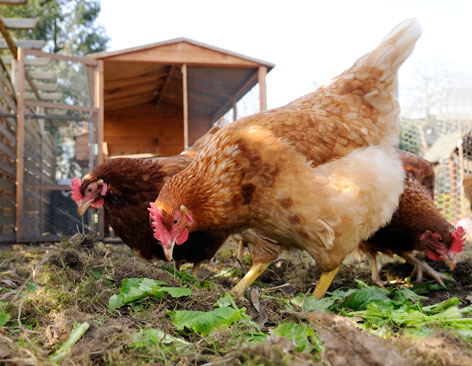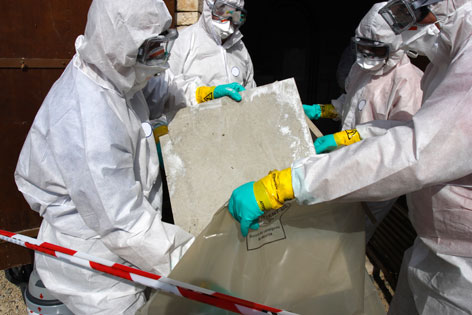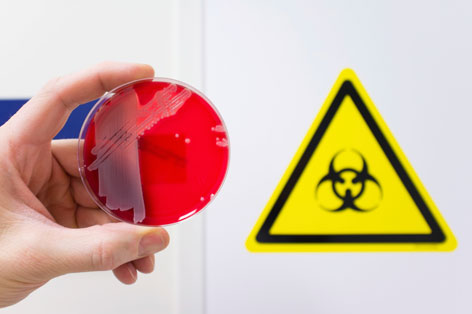What is a Superbug?
A superbug is a microbe that has become resistant to disinfectants and drugs. A bacterium turns “super” when the infections it causes can no longer be treated with the same antibiotics that used to be effective against it. In other words, the bacterium has developed “resistance” to those antibiotics.
What is Resistance?
Resistance is the ability of pathogenic microorganisms to evade chemical agents employed to kill them. Such chemical agents could be drugs such as antibiotics or compounds used for chemical disinfection and sanitization.
How Do Microbes Develop Resistance?
Microbes are living organisms and like any living being they have the ability to learn to survive in adverse conditions. In other words, they can evolve. Biological evolution is dependent upon genetic changes and natural selection of favorable mutations. So, when we are excited about a drug or chemical agent that it can eradicate a particular pathogen (disease-causing microorganism) and resort to using that drug or chemical agent as much as possible, the microorganism starts mutating to survive. Once it gets the right mutations to protect itself, it keeps them and is no longer treatable with that drug. We then say that it has become resistant.
Let’s look at one example of how that can happen: Penicillin is a well-known antibiotic. It was one of the first antibiotics to be discovered and it revolutionized the treatment of infectious diseases. In its molecular structure, penicillin has an organic ring form called a beta-lactam ring. An enzyme called beta-lactamase can break this ring and disrupt its function. While penicillin has been so effective and widely-used for so many bacterial infections, some bacteria have learned (through mutations) to produce beta-lactamase against it. Bacteria that can produce beta-lactamase cannot be treated with penicillin and are resistant to it.
A Classic Example of a Superbug: MRSA, and Scientists vs. Superbugs
Staphylococcus aureus is the name of a commonly occurring bacterial species. Staphylococcus aureus can be present normally on our skin or inside our nostrils. Virulent strains of Staphylococcus aureus can cause infections of the skin and respiratory tract. In the past, staphylococcal infections were generally responsive to treatment with penicillin. This was until some strains started producing beta-lactamase which made them harder to eliminate. Scientists responded by adding certain compounds to antibiotics that inhibited the lactamase, thus restoring the efficacy of the antibiotics. This worked for some time but then Staphylococcus countered with more mutations so that it was able to survive the modified drugs. Scientists came up with a powerful antibiotic, methicillin. Methicillin proved too strong for staphylococcus, at least initially, and along with related compounds was used extensively to treat staphylococcal infections that were not responding to other agents. However, and much to the scientists’ dismay, Staphylococcus mutated, adapted, and evolved again. Staphylococcal strains that are resistant to methicillin are a classic example of superbugs. They are resistant to multiple antibiotics and can cause serious infections that are particularly difficult to manage. Such strains are referred to as MRSA (Methicillin Resistant Staphylococcus Aureus).
MRSA is Scared of Chlorine Dioxide
The superbug MRSA presents a formidable challenge. It mostly lurks in hospital settings but can also be acquired from community places such as schools, gyms, dormitories, and nursing homes. Its multidrug-resistant nature makes it a fearsome pathogen. A great way to eradicate MRSA is using chlorine dioxide as a disinfectant. Despite its superbug status, MRSA is not resistant to chlorine dioxide. In fact, it is highly susceptible to it and, what’s more, it cannot develop resistance against it. This is because chlorine dioxide kills pathogens through a mechanism called oxidation. Most microbes, including MRSA, just don’t have the cellular mechanisms to survive an oxidative attack.
PERFORMACIDE® is a patented, point-of-use, ClO2 generator pouch system. When the generator pouch is immersed in water (like a tea bag), it creates a concentrated ClO2 solution which has passed all EPA requirements for use as a Disinfectant, Sanitizer, Tuberculocide, Virucide*, Fungicide, Algaecide, Slimicide, and Deodorizer.
Formulated for hospital use, PERFORMACIDE® ClO2 is a powerful disinfectant but does not leave harmful residues. PERFORMACIDE® can be sprayed, mopped, or sponged and allowed to air dry, so there is no risk of spreading microorganisms to other surfaces. Unlike ordinary bleach dilutions which only last 24 hours, PERFORMACIDE®’s activated solution remains effective for 15 days when properly stored.
About PERFORMACIDE®
PERFORMACIDE® is a suite of unique point-of-use ClO2 generation system products for use as a Disinfectant, Sanitizer, Tuberculocide, Virucide*, Fungicide, Algaecide, Slimicide, and Deodorizer. Applications include hospitals, medical facilities, veterinary hospitals & kennels, public areas, first responder facilities and equipment, clinics, rehabilitation facilities, diagnostic centers, food processing and serving facilities & beverage bottling facilities and more.
PERFORMACIDE® Hard Surface Disinfectant is an EPA registered for killing Methicillin Resistant S. aureus (MRSA), Staphylococcus Aureus, Listeria moncytogenes, Pseudomonas aruginosa, Salmonella, Trichophyton mentagrophytes (Athletes's foot), Vanomycin Resistant, Enterococcus faecalis, Mycobacterium Bovis (TB), Candida albicans, E Coli and Klebsiella pneumonia. PERFORMACIDE® is an EPA registered virucide for non-enveloped viruses including; Ebola, Adenovirus type 5, Coronavirus, HIV-1, Hepatitis A, Herpes Simplex-2, Poliovirus-1, Influenza A, Canine Parvovirus, Norovirus, Feline Calicivirus, Rhinovirus, Rotavirus and Vaccinia Virus.
PERFORMACIDE® is manufactured by OdorStar, LLC with headquarter offices in Fort Lauderdale Florida. http://odorstar.com














